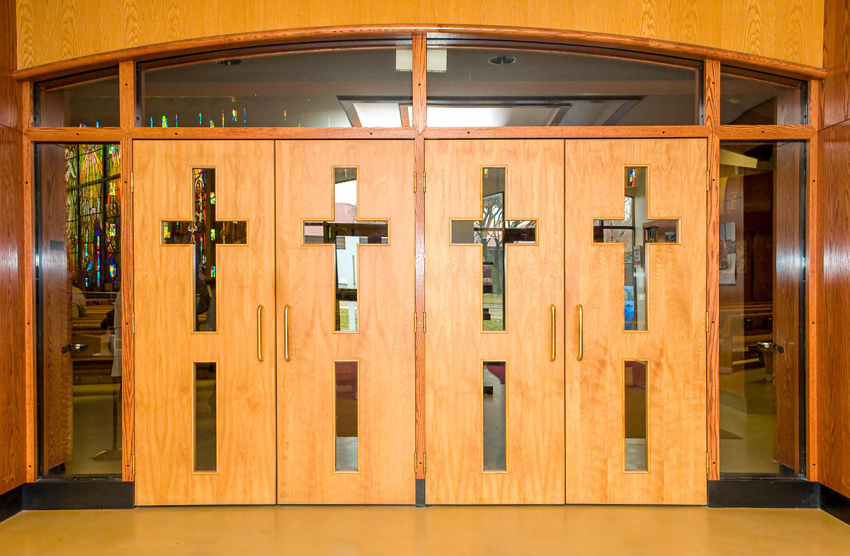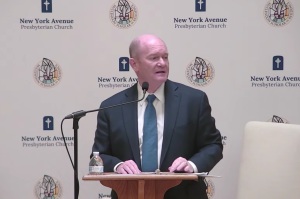Pastors, churches still struggling in throes of ‘uncertainty and unsettledness’ post-pandemic: study

In a time of “uncertainty and unsettledness” following the COVID-19 pandemic and lockdowns, churches are still struggling to attract young people to the pews, address concerns about aging clergy and congregants, and commit to doing what it takes to ensure their future survival, a new study conducted by the Hartford Institute for Religion Research at Hartford International University shows.
“It is always helpful when a new study or survey paints a consistent picture that points in a clear and unambiguous direction. However, such is not the character of the times we are living in currently. Much of society is still unsettled and remains in flux,” explained Scott Thumma, professor of sociology of religion and director of the Hartford Institute for Religion Research, in the study released in August titled "Back to Normal? The Mixed Messages of Congregational Recovery Coming Out of the Pandemic."
“This varying reality is evident in the results of this survey.”
The study, which includes 4,809 survey responses from 58 Christian denominational groups gathered from January to May, is part of a larger five-year research project known as Exploring the Pandemic Impact on Congregations, funded by Lilly Endowment Inc.
While the data show that approximately one-third of the 4,809 churches in the study say their attendance has increased since the pandemic began in 2020, more than half say they have suffered a slight or severe decline in attendance compared to where they were before the pandemic.
“This finding raises the question of what impact the pandemic has had on congregational growth and decline trajectories. While the pattern of decline isn’t dramatic at this point, neither is the pandemic impact over,” the study notes. “Congregations remain optimistic about their future, but it is also apparent they are continuing to wrestle with the troubling conditions that were in existence long before COVID-19 arrived.”
One condition the churches had been wrestling with prior to the pandemic was their aging clergy and the increasing share of their members over 65.
The average age of senior church leaders increased from 57 in 2020 to 59 in 2023, while the share of churchgoers over 65 increased from 33% to 36% over the same period, according to the study. For Mainline Protestant churches, almost half the average congregation was found to be over 65.
“Christian churches and their leaders are significantly older as a result of having insufficient representation from younger generations. During these three time periods, the percentage of attendees under the age of 35 (all children, youth, and young adults) decreased from 37% in 2020, to 35% in 2021, and to 32% in 2023,” the study noted.
The study also found that with the aging demographic, churches have not shown a “willingness to change to meet new challenges” as they emerge from the pandemic, even though they had expressed an interest in doing so at the start of the pandemic.
Since the first survey in spring 2021, this important indicator of adaptation and innovation has been trending downward both in terms of overall agreement and the percentage of churches strongly agreeing with this statement,” the study says.
“This is especially troubling because this measure indicated a greater inclination in 2021 post-pandemic churches to do what was necessary to adapt compared to pre-pandemic responses, with nearly 50% strongly agreeing to that attitude. But by 2023, both the total congregations in agreement and those strongly in agreement had dropped significantly and are now below where they were in early 2020,” it continues.
“Obviously, congregational dynamics and worship patterns have changed in many churches in the past three years, but this finding seems to indicate that their earlier flexibility and creativity in response to the pandemic is beginning to diminish.”
Hybrid church
Despite the diminishing willingness of churches to adapt to change, most churches have embraced hybrid worship, constituting members online and in-person in varying degrees.
Hybrid worship “has the potential to reform a static place and time-based physical worshiping community into a congregation beyond the walls with the potential for revolutionary adaptation,” the study says. Some 73% of the churches in the study offer both in-person and virtual worship compared with just 20% of churches that said they offer online streaming worship in 2019.
The study shows that hybrid worship has become a mainstay of congregations today partly because some church members have demanded it, but churches that offer this model of worship were found to have a higher median attendance and higher per capita giving.
Researchers noted, however, that churches will need to invest in better utilizing the technology to increase engagement among those who attend virtually, beyond streaming worship services, religious education for adults, and prayer groups.
“Finding ways to enhance the commitment of virtual attendees remains a challenge for congregational leadership, yet it holds great promise both to grow and strengthen churches,” the study notes.
“Embracing a hybrid church model means that leadership must look beyond minimal efforts to livestream services and begin to find virtual ways to provide fellowship, stimulate volunteering and service, and deliver discipleship, education, and pastoral care to online participants,” it adds. “Unfortunately, even though nearly three-quarters of churches use hybrid worship practices, most congregational programs have gone back to an in-person only model.”
Clergy exhaustion
As American pastors continue to skew older, with a majority recently reporting that it is becoming increasingly difficult to find mature, young Christians willing to do their jobs as they prepare to retire, the new Hartford study provides some insight into this trend.
The study notes that in 2023, more than half, or 51% of the pastors surveyed, said they had thought about quitting their jobs compared with 37% two years earlier. Younger pastors were found more likely to entertain this thought, along with other factors.
“While relatively few of these clergy dwell on this thought often, over a quarter have considered it more than once or twice in moments of stress. Likewise, this survey doesn’t capture those ministers who may have already left their congregations or the pastoral ministry. While there are no clear figures on how many are departing their church or profession, it certainly is happening. The data from this study shows that those who might have left are not alone in their exhaustion,” it explains.
“An in-depth look at who is most likely to think about quitting the pastoral ministry shows it is more likely clergy with any of the following traits: younger, female, part-time, bi-vocational, more recently hired, and those who see a poor fit between themselves and the membership.
“Ministers in more challenging circumstances are also more prone to consider quitting,” the study adds. “Those clergy in congregations that are financially challenged, less willing to change, have a negative outlook on the future, and have higher conflict are more likely to consider leaving the ministry.”
Contact: leonardo.blair@christianpost.com Follow Leonardo Blair on Twitter: @leoblair Follow Leonardo Blair on Facebook: LeoBlairChristianPost



























